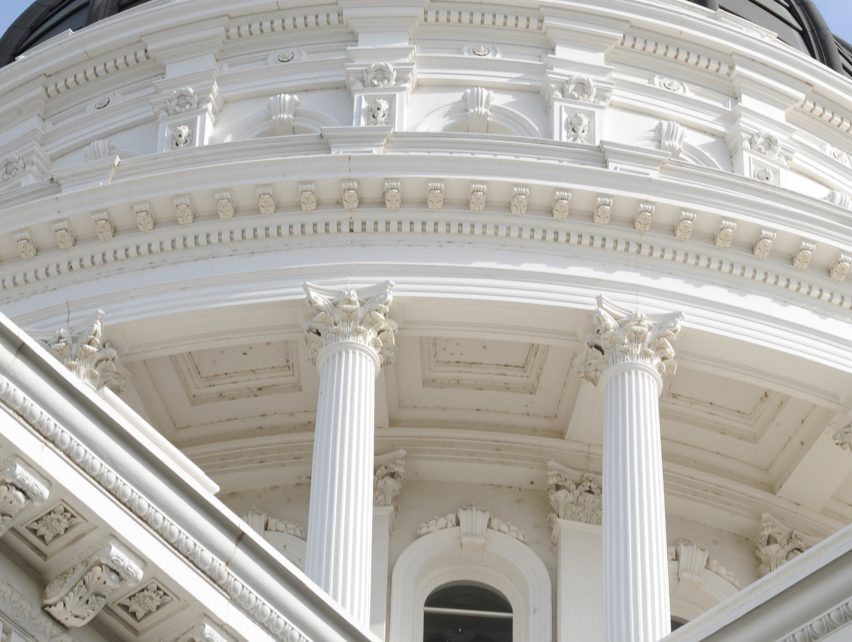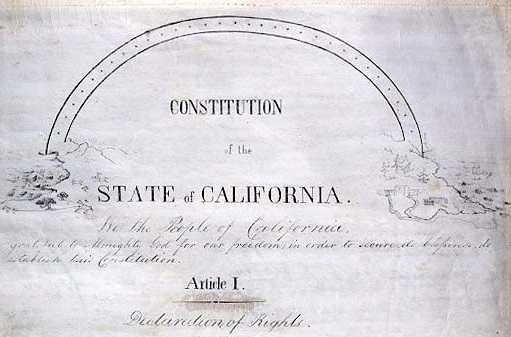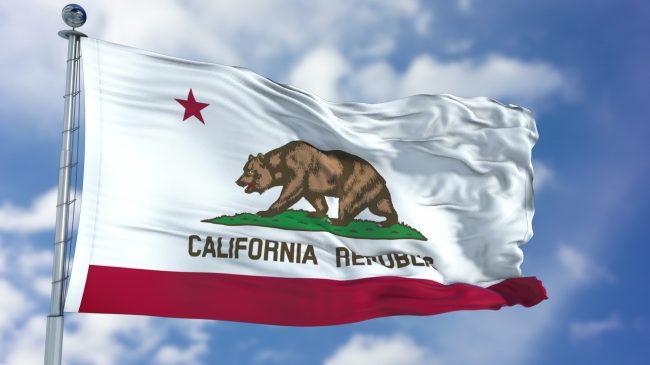
State Capitol. (Photo: Kevin Sanders for California Globe)
California’s State Government Spends Twice as Much Today Per Resident than Just 10 Years Ago
Looming deficits present another opportunity for solutions for California
By Edward Ring, December 1, 2022 2:45 am
Less than six months ago, California’s State Legislature approved a record breaking $300 billion state budget. Within that total, and to finance most of the state’s ongoing operations, was a general fund allocation of $235 billion for the fiscal year ending June 30, 2023.
Record breaking budgets are nothing new. Only ten years ago, California’s general fund was $93 billion, which adjusted for inflation would be $118 billion in today’s dollars. Meanwhile, California’s population over the past ten years has only grown from 38 million to 39 million. This means that inflation adjusted per capita general fund spending in California has increased from $3,124 back in 2013, to $6,023 today. California’s state government is spending twice as much money today per resident as it did just ten years ago.
This explosion in spending has yielded dubious benefits. By nearly every measure, things are worse off today in California. Obvious examples include expensive and unreliable energy and water, failing schools, rising crime, unaffordable housing and college tuition, and an exploding homeless population, but that’s hardly the entirety of the worsening challenges facing Californians. The decade-long run of record tax revenue spawned an avalanche of new regulations, driving up prices, discouraging expansion of big business and driving small businesses under. Through its spending priorities California attracts the dependent and repels anyone striving for independence. It’s grotesquely inequitable.
This is the context in which to view the latest revenue projections coming from the nonpartisan Office of Legislative Analyst. The concern here should not be that our state budget for 2023-24 now faces a potential $24 billion deficit. The concern should focus on why there has been an explosion of state spending, yielding nothing but growing dysfunction.
As it is, LAO’s projection of a $24 billion deficit is a baseline case, relying on several assumptions that could go sideways, tumbling the actual deficit into much more troubling territory. For example, LAO acknowledges the likelihood of a deepening economic recession, but does not factor the impact of a recession into their tax revenue estimate. They write, “Were a recession to occur soon, revenue declines in the budget window very likely would be more severe than our outlook.” In the section of their analysis where LAO projects worst case scenarios, they project general fund revenue dropping as low as $180 billion in 2024-25, which based on merely maintaining the current general fund budget reflects a deficit of $55 billion.
If the events of the past three years have taught us anything, it’s that consequences of pivotal events are often only obvious in hindsight. In June of 2020, did anyone really think that COVID shutting down half the economy would lead to a boom in tech company valuations?
Did anyone at that time realize how uniquely beneficial the tech stock boom would be to California’s state general fund tax revenue? It’s easy today to look back and recognize the chain of causes, but it wasn’t easy to predict them when the COVID ordeal first began. It’s also easy, and probably accurate, to say that over this time period, the state legislature’s blithe ambition to make sure spending kept pace with revenue growth was blissfully unaware of just how improbable and fleeting the gift was that they were squandering.
Another lesson from the past three years, however, is to be wary of excessive pessimism. Unsustainable economic models work until they don’t work, and as long as the U.S. Dollar is the least afflicted currency in the world and the U.S. is the most secure investment haven in the world, and as long as inflation continues to reliably erode the principal value of a nominally exploding federal debt, massive deficit spending to stimulate economic activity may remain a viable strategy. If only more of that spending would be invested in practical infrastructure. Nonetheless, this could go on for decades. It could take forms we can only imagine. We simply don’t know.
The question therefore isn’t how to cut spending and raise taxes in order to balance the budget. The likely truth is that California’s state legislature is going to muddle through one way or another. The prevailing question should be how does California’s state legislature start to do the right thing instead of the wrong thing with all that money? They’ve doubled per capita spending in the last ten years, and ordinary hard working Californians can’t afford to live here any more. Clearly, so far they’re doing everything wrong.
LAO warnings of an impending general fund deficit are a good time to not only talk about how California’s state legislature is on the wrong course, but exactly how it can change its course. If you want to realign the state’s politics, it isn’t enough to say taxes, crime, and prices for everything are too high, and educational achievement and the supply of housing are too low. Propose concrete solutions. Very few Californians would mind paying their taxes if the state was affordable and effectively addressing the challenges of crime, homelessness, education, housing, water, transportation, energy, and education.
Solutions exist, but lack politicians with the courage to promote them and the charisma to effectively convince voters of their efficacy.
- Offer state vouchers to parents to use to send their children to any accredited school, public or private.
- Rescue public education by replacing woke curricula with classical education would save billions and rescue a generation from a failing system.
- Fast track approval of nuclear power plants, natural gas fracking, and refinery expansions to force competition for energy and lower the prices for fuel and electricity.
- Fund more water supply projects and practical freeway improvements, using tax and bond funds to yield long term economic dividends.
- Approve housing developments in weeks instead of decades and reduce California’s absurdly overwritten building codes to lower the cost of housing.
- Turn the timber industry loose again to thin California’s dangerously overgrown forests.
- Build inexpensive minimum security facilities to incarcerate drug addicts and petty thieves to curb crime and end unsheltered homelessness. Use these facilities to teach inmates vocational skills so upon release they can fill hundreds of thousands of high paying construction jobs.
New solutions. An entire new alternative vision. This is the real discussion that California needs. Not just how to balance the budget. Rather, how to allocate the budget, and how to deregulate the economy. Where are politicians who are ready to step up with more than criticism of the failures of California’s one-party state, and offer solutions?
- Ringside: Will the Sites Reservoir Ever Get Built? - September 4, 2025
- Ringside: How Dredging the Delta Enables Groundwater Recharge - August 28, 2025
- Ringside: Tips to Understand Our Convoluted Yet Obligatory Units of Water - August 21, 2025







Mr. Ring offers some common sense solutions but the deep-state globalist Democrat cabal that controls California will never implement them? Why would they want to solve any of the state’s problems that might reduce their control over Californians? Regarding the fact that California’s state government is spending twice as much money today per resident as it did just ten years ago, how many of those California “residents” are in the U.S. illegally and how much of the money is being siphoned off to fund Democrat affiliated NGO’s and non-profits?
The State spends a disproproportionate amount of tax payer money on residents who don’t contribute anything to the State budget and almost nothing on the middle class who provide the most tax dollars to California. This incredible transfer of wealth is unsustainable. The only people who don’t pay taxes in California are: foreign nationals here illegally; the underclass who consume the majority of both State and Federal resources via HUD housing, WIC, AFDC, food stamps, WIC, Welfare to Work (sic), Medi-Cal, Medicare , ad nauseum. There isn’t a single facet of their lives that isn’t subsidized by taxpayers except for gasoline, auto purchases, and car stereos; and the super wealthy who have the means to invest in business ventures to shield or offset their wealth (ever seen a middle class winery onwner?) and the political clout to get their special interests met. Take agribusiness in the Blythe and Coachella Valley area as an example. They get water at a ridiculously low rate per acre/foot (watch “Chinatown”), free consultng services from the University of California, and export a lot of their premium crops to Asia where they get top dollar. The Blythe airport looks like LAX on days the Progressive Farmers, Farm Bureau, the local wateroard, or any of the other myriad of associated trade or government meetings are held as twin-engine Beechcraft and Mooney aircraft from out of State fly in to protect their business interests. This massive export of wealth from the middle class is what will eventually lead to the collapse of California’s economy.
This is why Gavin and the Teachers Union shot down prop 30….they will need is massive tax increase to pay for the new budget shortfall – “for the children”
I wish this would get some coverage on the local news but there is never anything critical of CA government on the news or anywhere else in state to reach normal people.
First of all, covid did NOT shut down half the economy; tyrants did that. The governor, mayors, and “health experts” were the culprits, and the citizens suffered. Many left the state during that time to escape the nonsense and most landed in states with freedom. I think that we can safely say that unless Califorians get smart and vote enmass for conservatives, not one of those solutions will ever be realized. Too bad, they are all excellent solutions. We won’t be here to suffer much longer as we take off for freedom as well.